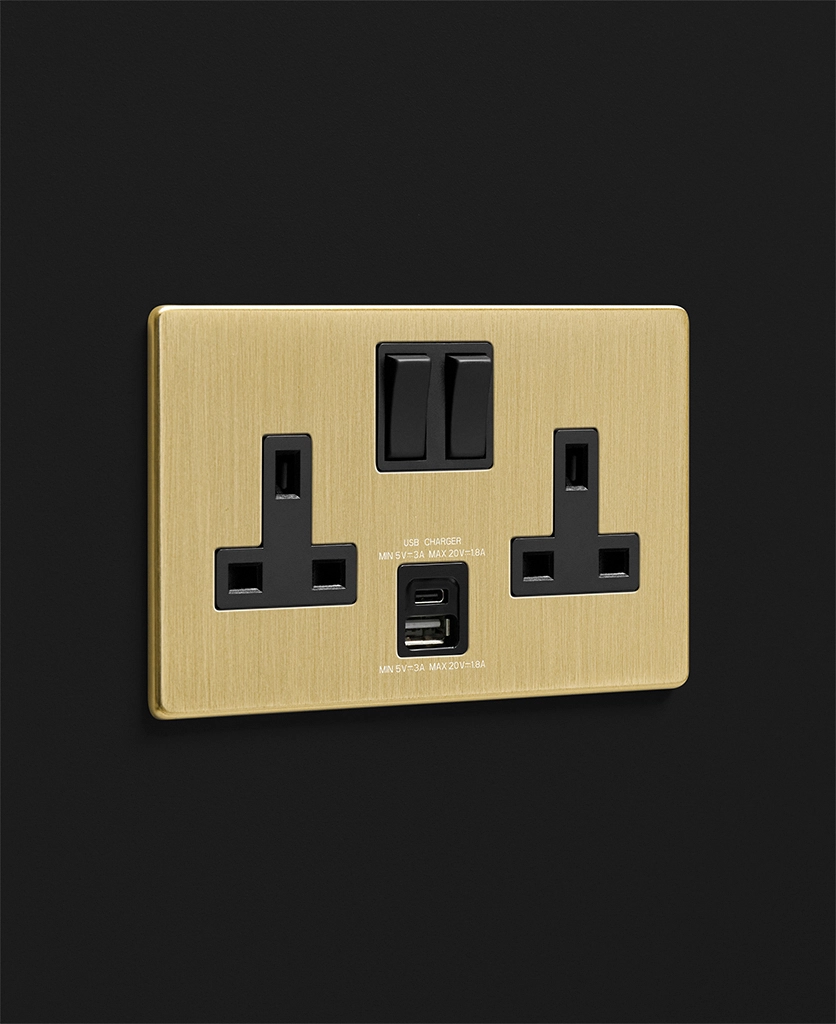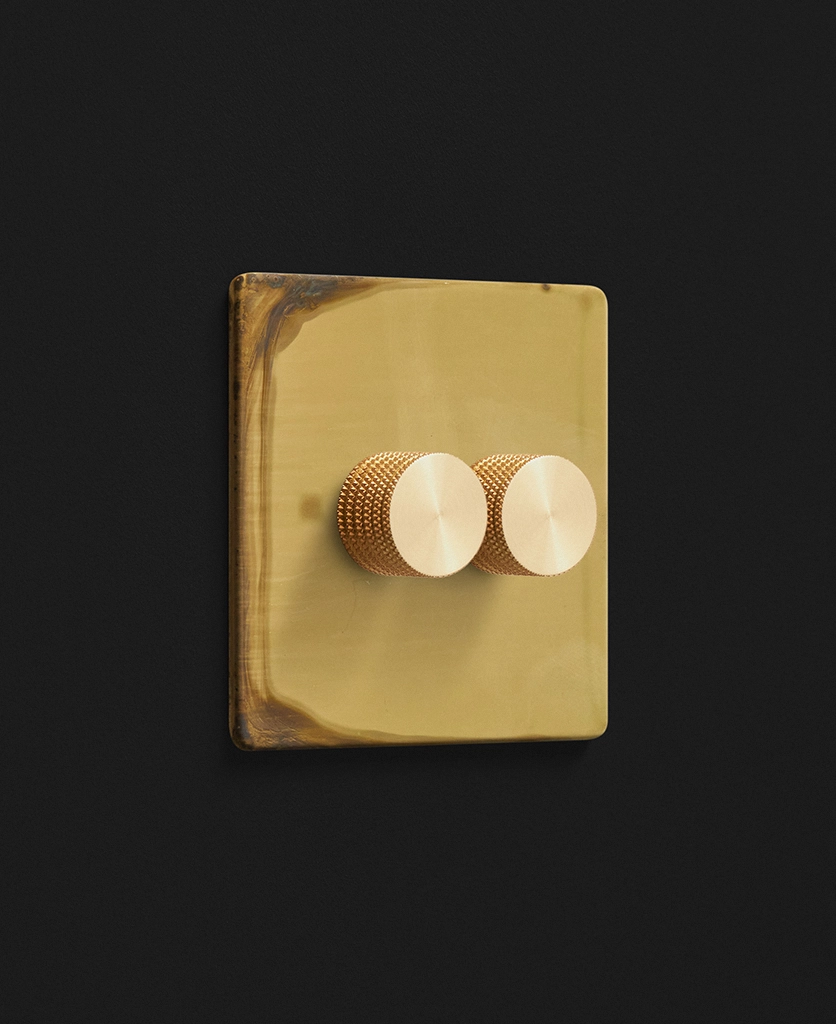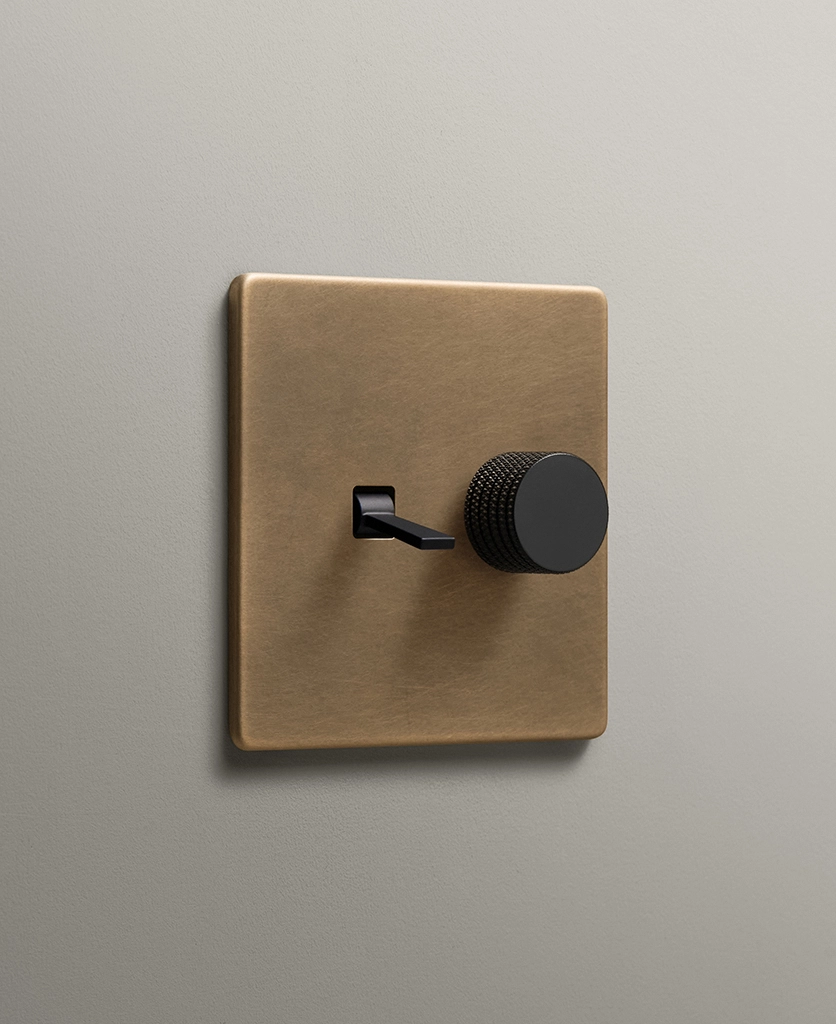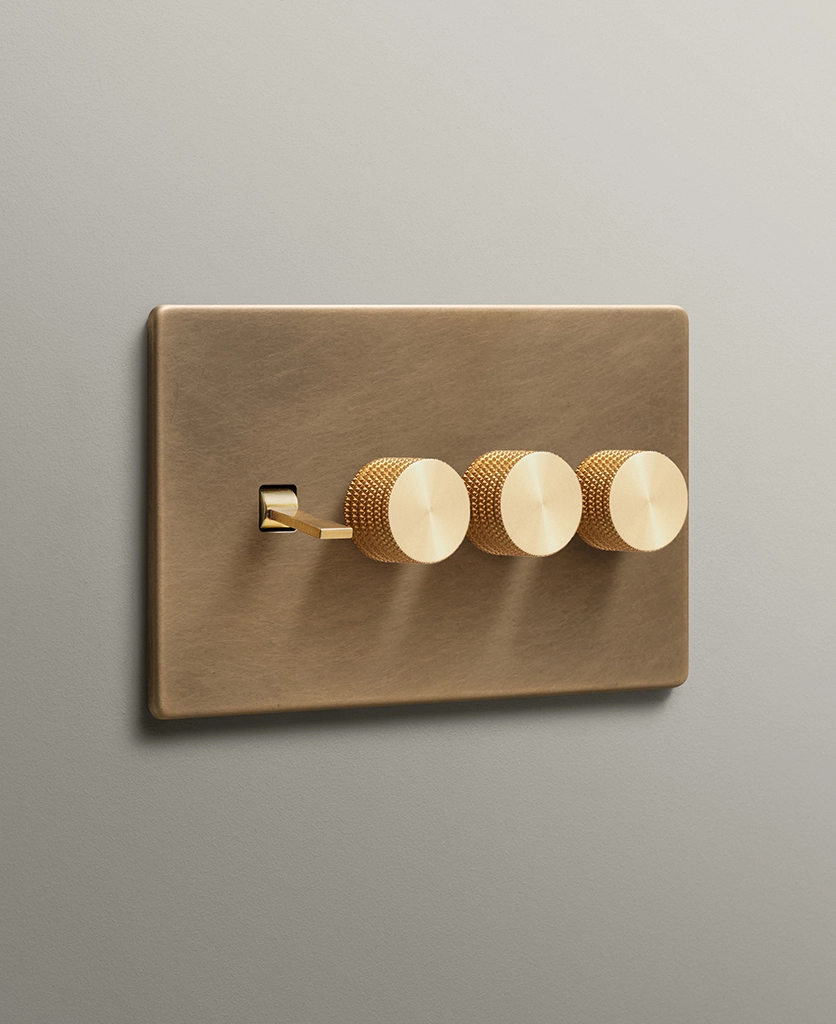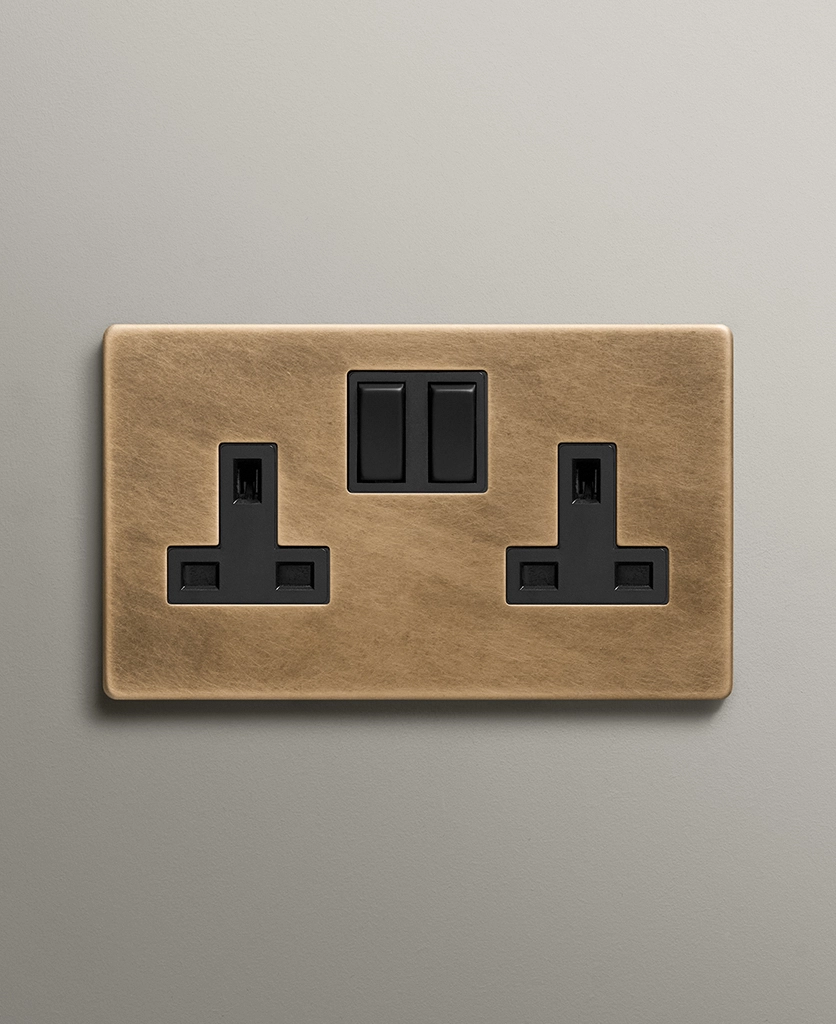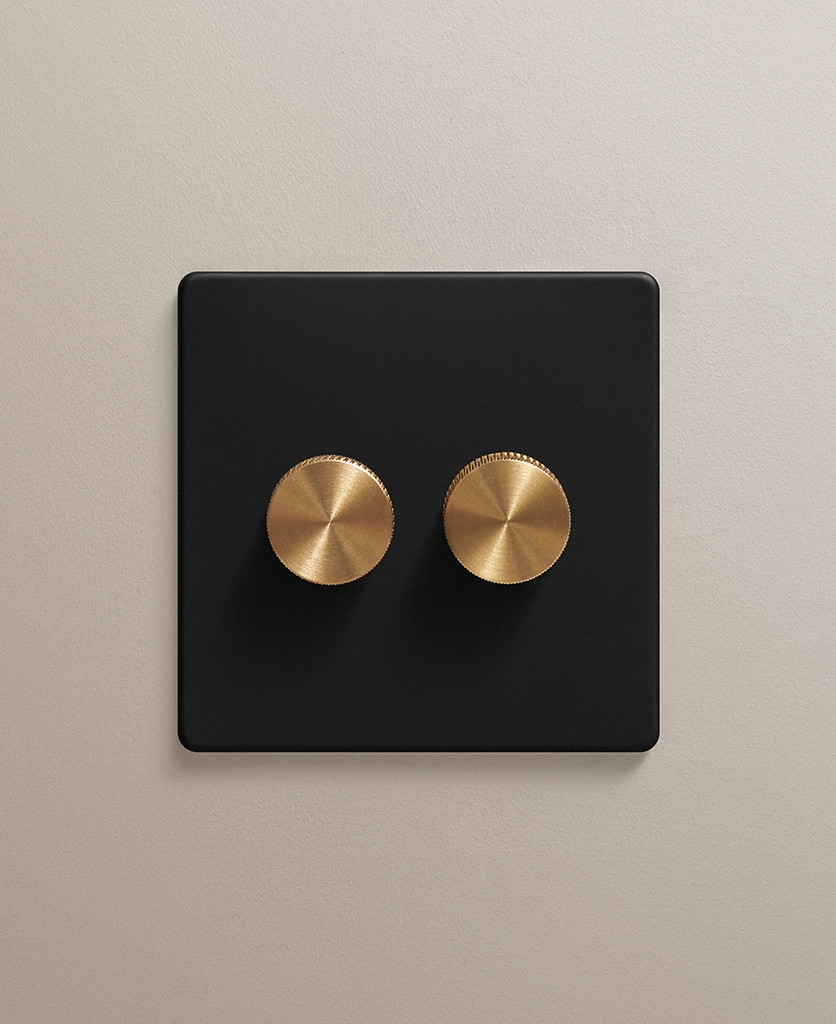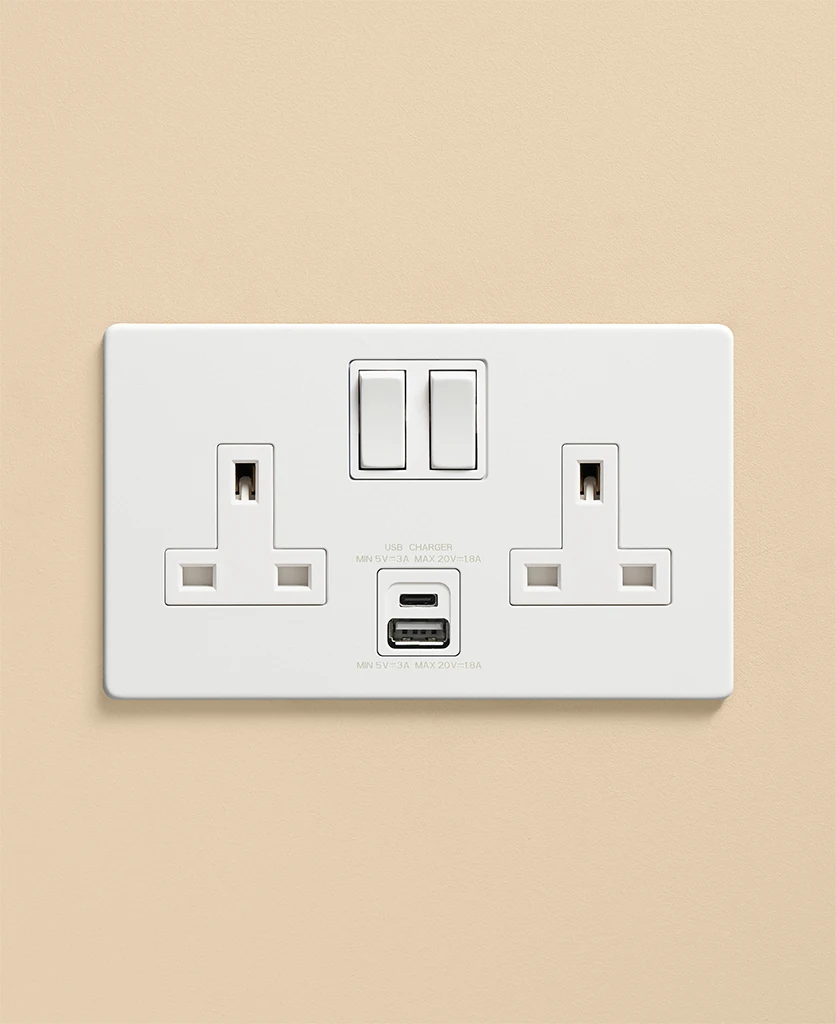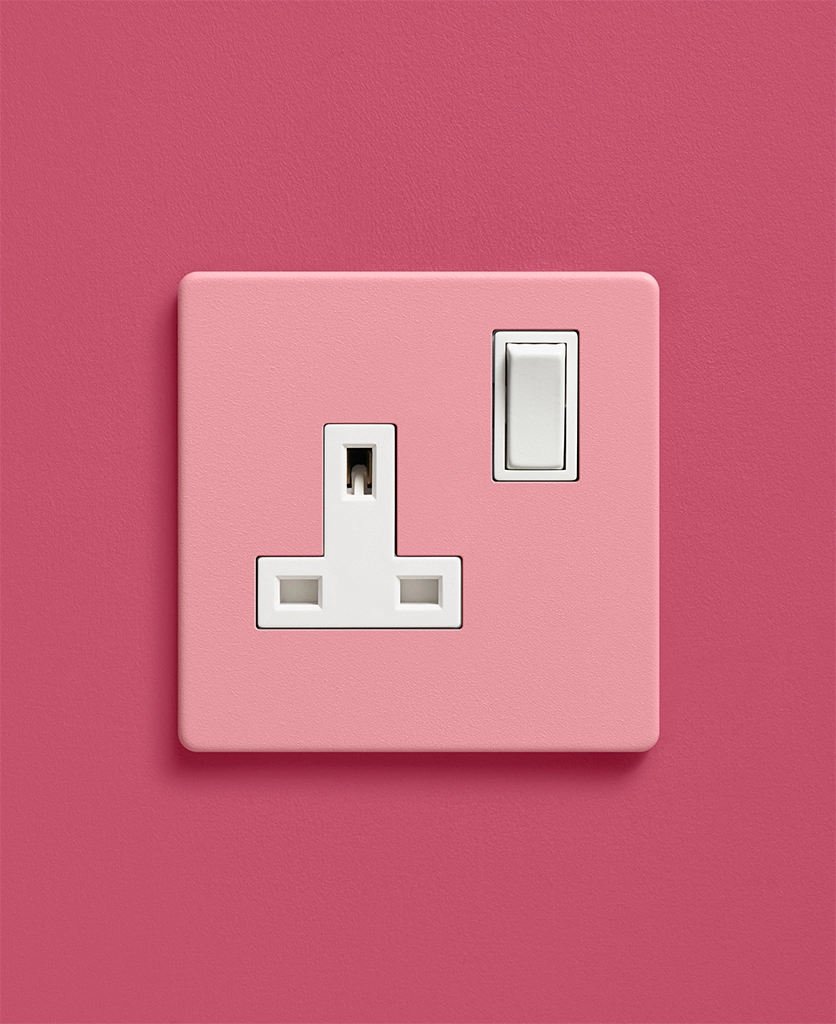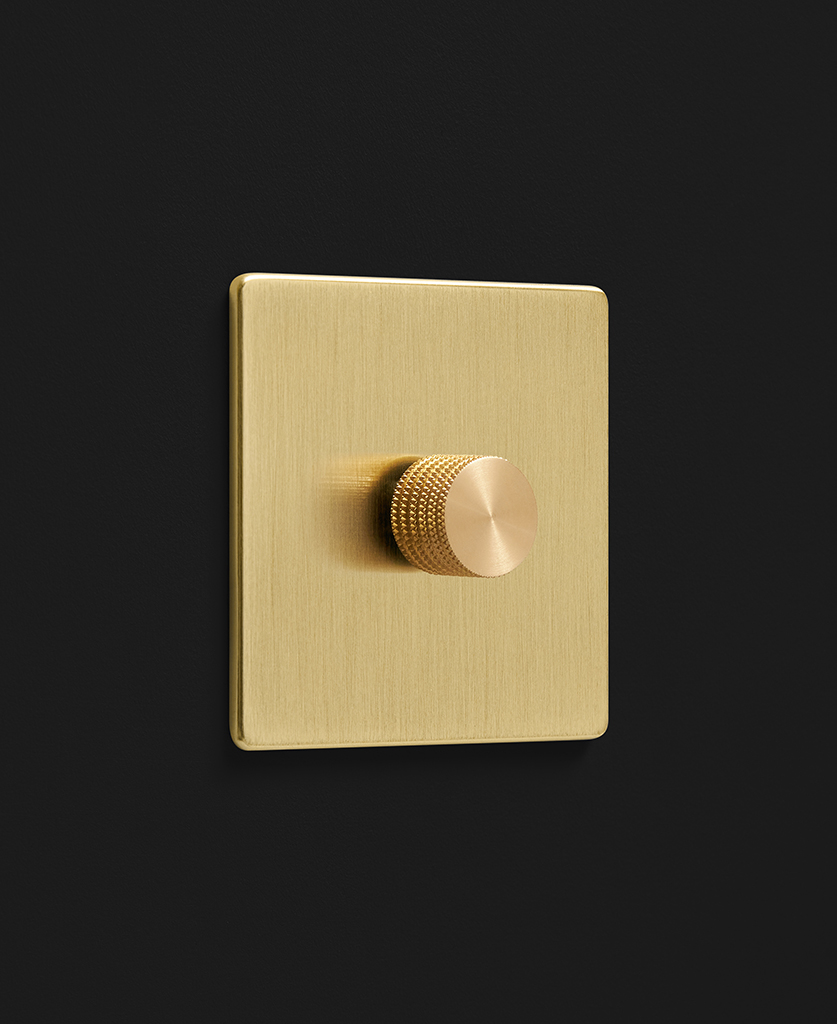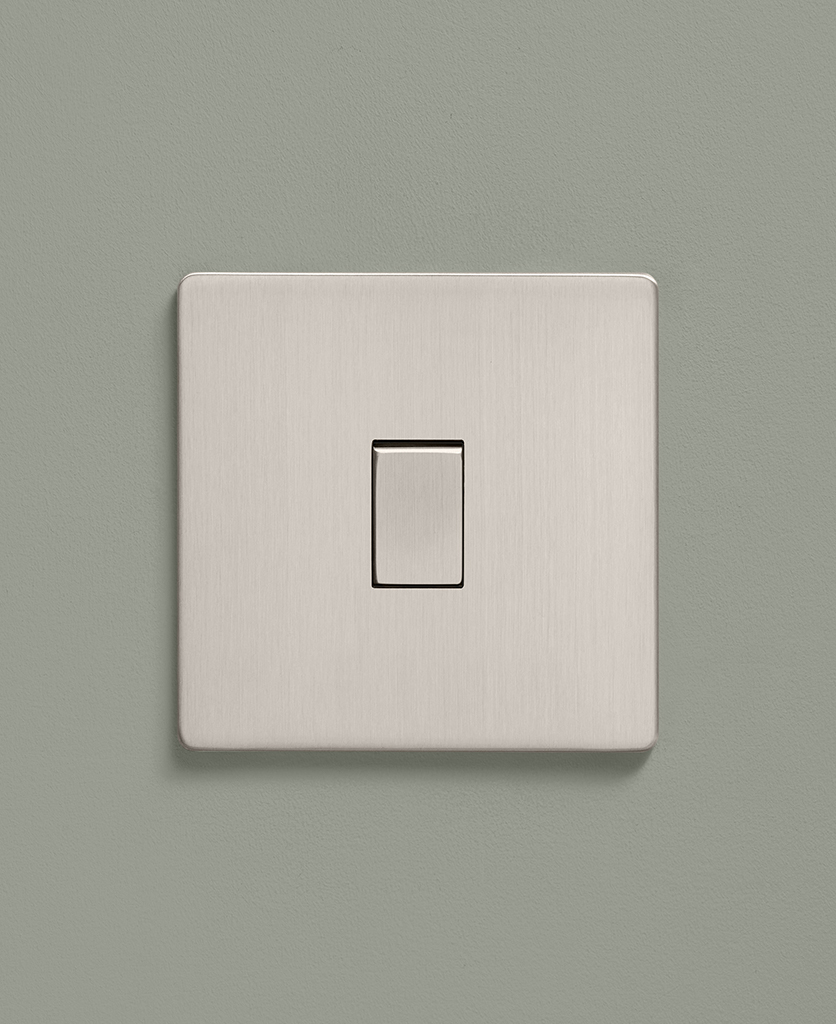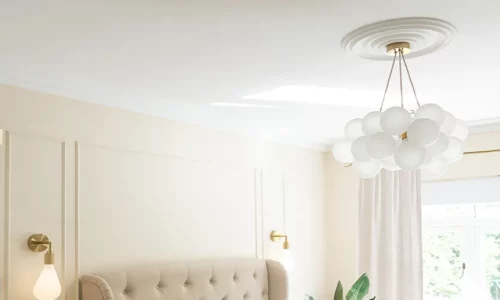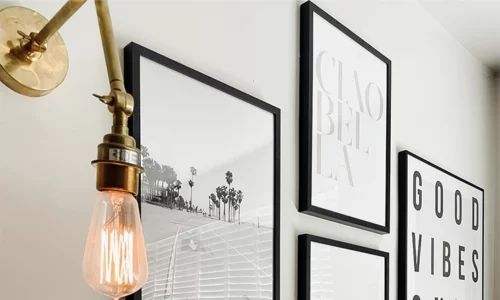What Height Should Sockets and Light Switches Be?
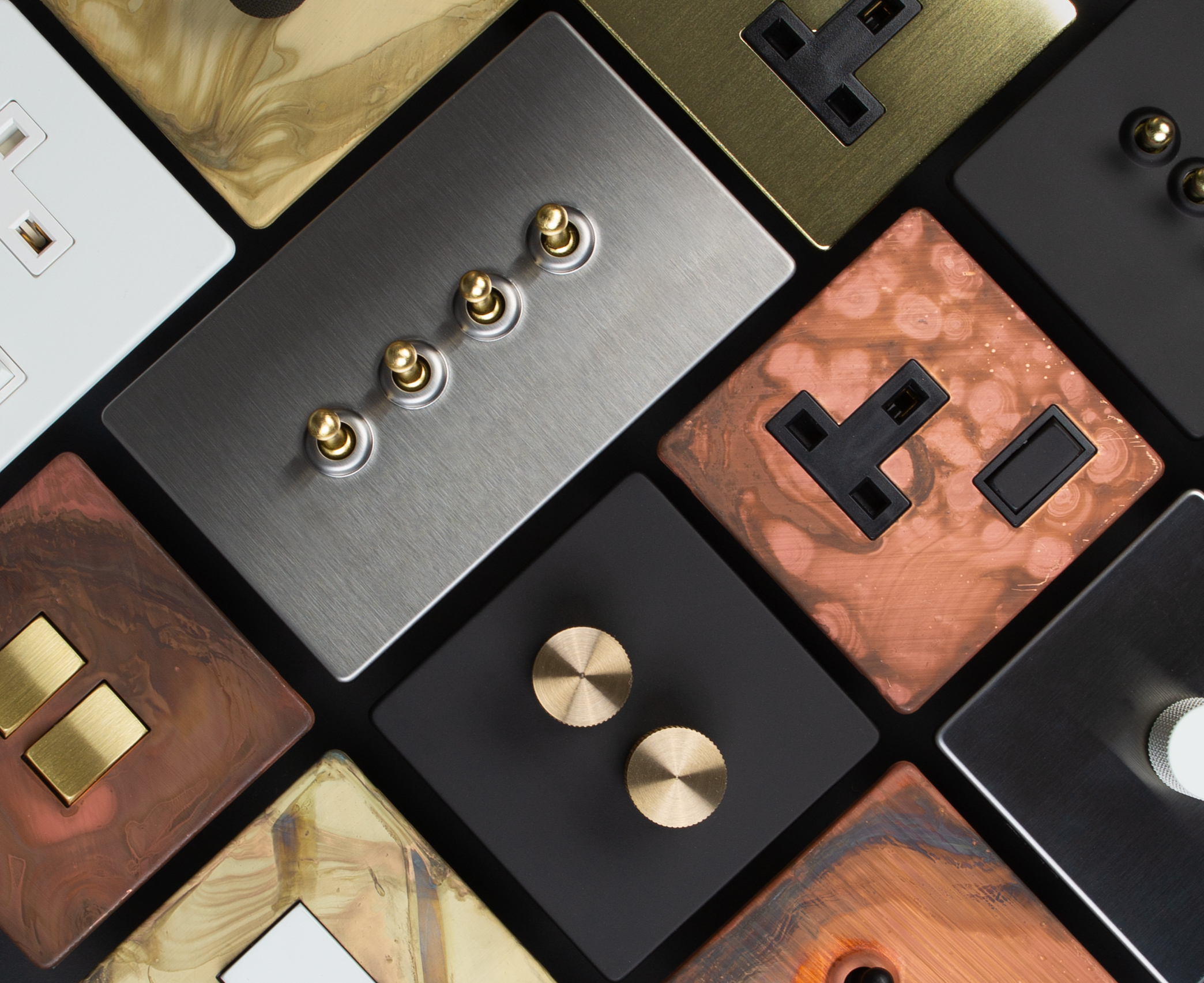
Noticing your laptop battery running low, you reach across your desk and plug the charger in with a satisfying ‘click’, appreciating the ease and fluidity of the movement.
The plug sockets in this area of your home used to be difficult to reach, distracting you from your work every time you had to crawl under the desk to charge your devices. However, upgrading your switches and sockets in line with socket height UK recommendations has made your life easier while simultaneously enhancing the visual appeal of your office space.
Find out what height your sockets and light switches should be installed at and elevate your décor with designer switches and sockets from Dowsing & Reynolds.
What height should your plug sockets be?
According to UK Building Regulations, all wall-mounted plug sockets should be positioned so they’re easy to reach. While there are no specific UK socket height regulations that you need to follow if you’re in the process of rewiring your home, it’s recommended that you install plug sockets at least 450mm to 1200mm from the floor.
Of course, this does not apply to sockets positioned above work surfaces, such as in kitchens or home offices. There are no regulations that dictate how high plug sockets should be installed in this instance, but it’s recommended that you leave at least 15cm between the work surface and the bottom of the socket.
Take extra care when installing plug sockets in the kitchen. There needs to be enough of a gap between the sockets and your appliances to minimise damage to the sockets and cabling. Similarly, make sure you don’t install plug sockets too close to the sink or any other area where water is likely to be present.
What height should your light switches be?
There are no specific regulations when it comes to light switch height – just make sure they’re in an easily reachable area and at least 350mm away from room corners.
However, as a general rule of thumb, light switches should be installed roughly 48 to 52 inches above the floor. This is a comfortable height for most people to be able to reach a switch when standing up, although you may want to adapt this based on your specific needs, or the needs of anyone you live with.
As with sockets, there are different recommendations for switches placed above countertops or by your bedside to operate bedroom lighting. In this case, you should leave at least 15cm between the countertop and the bottom of the switch.
Other tips for installing switches and sockets
Knowing what height to install your switches and sockets at is important, but there are other factors you’ll need to consider as well if you want to get it just right:
1. Opt for switches and sockets that match your décor
Choosing switches and sockets in a colour or finish that complements the rest of your décor is an excellent way to tie your space together without being overly garish about it. If your lighting fixtures all have a gold metallic finish, for example, opting for matching gold switches and sockets will help to create a more cohesive, high-end look.
In fact, if you’re looking to enhance the visual appeal of your home, choosing switches and sockets that match your décor is a must – nothing ruins the carefully curated beauty of a room like outdated white plastic switches and sockets.
2. Consider combination switches for more control
For multifunctional areas of your home like the living room, where you likely have several different lighting fixtures to operate at once, it’s worth considering combination light switches. These switches not only enable you to turn multiple lights on or off from a single switch plate, but also combine simple on/off toggle switches with adjustable dimmer switches for maximum control over the lighting and ambience.
3. Choose the most convenient location for you
There’s ultimately no right or wrong in terms of where to position your switches and sockets, but think about where will be most convenient for you. Light switches should be placed close to the door, for example, so you don’t have to feel around in the dark.
When it comes to plug sockets, consider where you usually sit and make sure they’re easy to reach. Sockets right next to your bed or sofa are useful so you can easily plug your devices in to charge without having to get up and walk across the room. Position sockets above your desk rather than underneath it so you don’t have to get on your hands and knees every time your laptop needs charging.
How many sockets should you have in each room?
There is no legal minimum for how many sockets need to be provided in a home, but it’s important you have enough sockets in each room to reduce the risk of overloading.
Electrical Safety First suggests:
| Room | Small (up to 12m²) | Large (more than 25m²) |
|---|---|---|
| Living room | 4 | 8 |
| Kitchen | 6 | 10 |
| Dining room | 3 | 5 |
| Single bedroom | 2 | 4 |
| Double bedroom | 3 | 5 |
| Home office | 4 | 6 |
| Hallway | 1 | 3 |
| Loft | 1 | 3 |
Explore Dowsing & Reynolds’ range of designer switches and sockets
Our designer switches and sockets are designed to delight your senses with every touch. We’ve considered every detail, from the premium look and finish of each socket to the satisfying feel of the switches beneath your fingers as you flick them on.
Discover a wide variety of exclusive colours and finishes, including sleek black switches and sockets to make your space feel more sophisticated, as well as colourful switches and sockets to inject a vibrant pop of colour into your home.

